Cane corso vs Rottweiler: Vet's breed comparison
Can you spot the difference between a cane corso and a Rottweiler? Our vet reveals all – including strength, trainability, and appearance
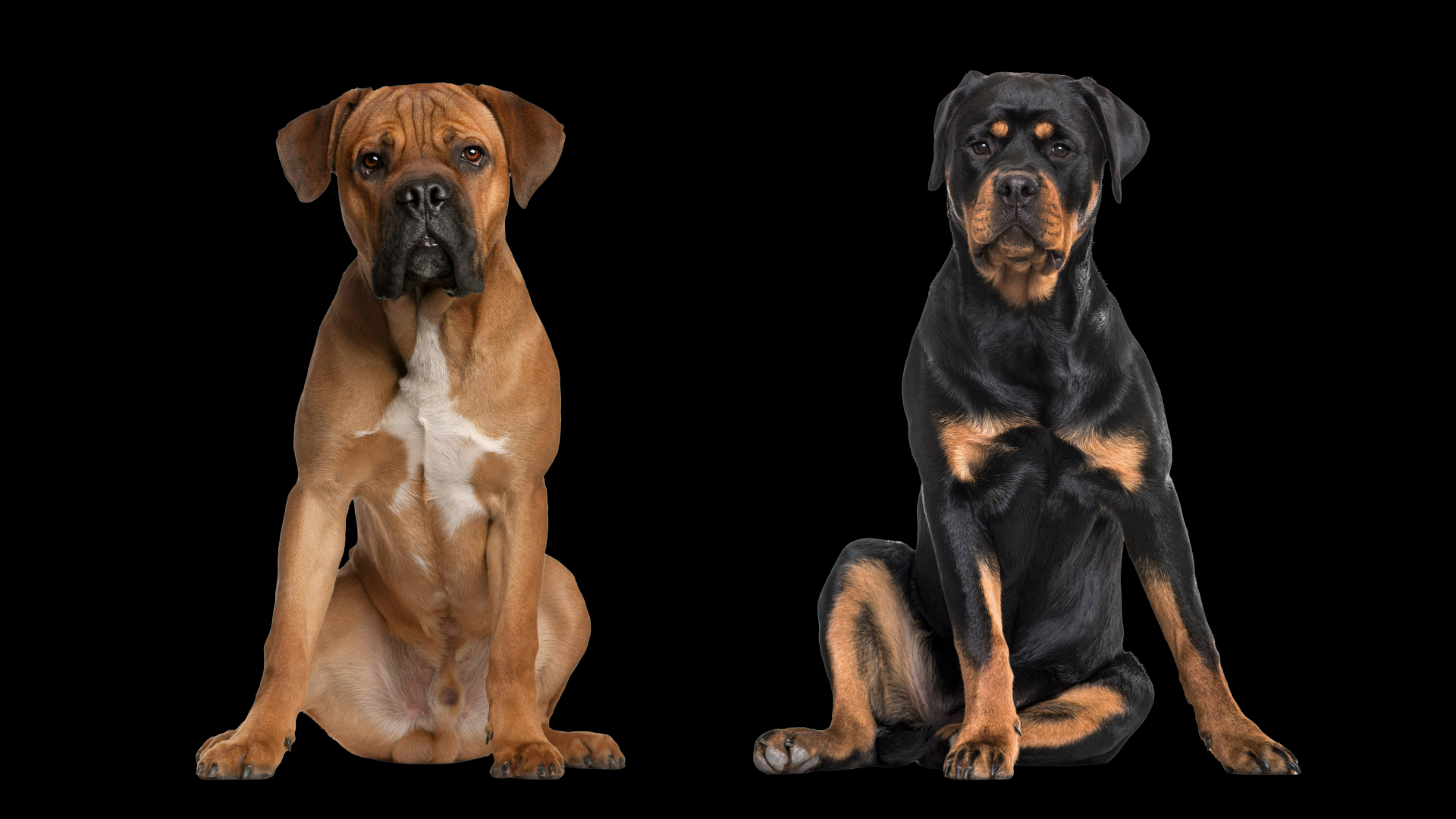
If you're looking for a large and energetic dog breed, you might be on the fence between a Cane Corso and a Rottweiler, and want to know the differences. In terms of looks and temperament, there's not much in it, but there are a few key things you need to know.
Both of these dogs originate from Roman Italy, with the cane corso descending from war dogs and the Rottweiler used for pulling carts, herding cattle, and guarding homes. To this day, they are still considered some of the best guard dog breeds, thanks to their powerful build and protective instincts.
Below, expert vet Dr Rebecca MacMillan reveals the similarities and differences between these two dogs, including size, appearance, intelligence, exercise needs, and more.
Size: Cane Corso vs Rottweiler
Both dogs are considered large breeds, with the cane corso standing 23.5–27 inches tall and weighing between 88–110 pounds. The Rottweiler is slightly smaller, standing 22–27 inches tall and weighing 80–135 pounds.
| Header Cell - Column 0 | Cane Corso male | Rottweiler male | Cane Corso female | Rottweiler female |
|---|---|---|---|---|
Height | 25-27" | 24-27" | 23.5-25" | 22-24" |
Weight | 99-110 lbs | 95-135 lbs | 88-99 lbs | 80-100 lbs |
Appearance: Cane Corso vs Rottweiler
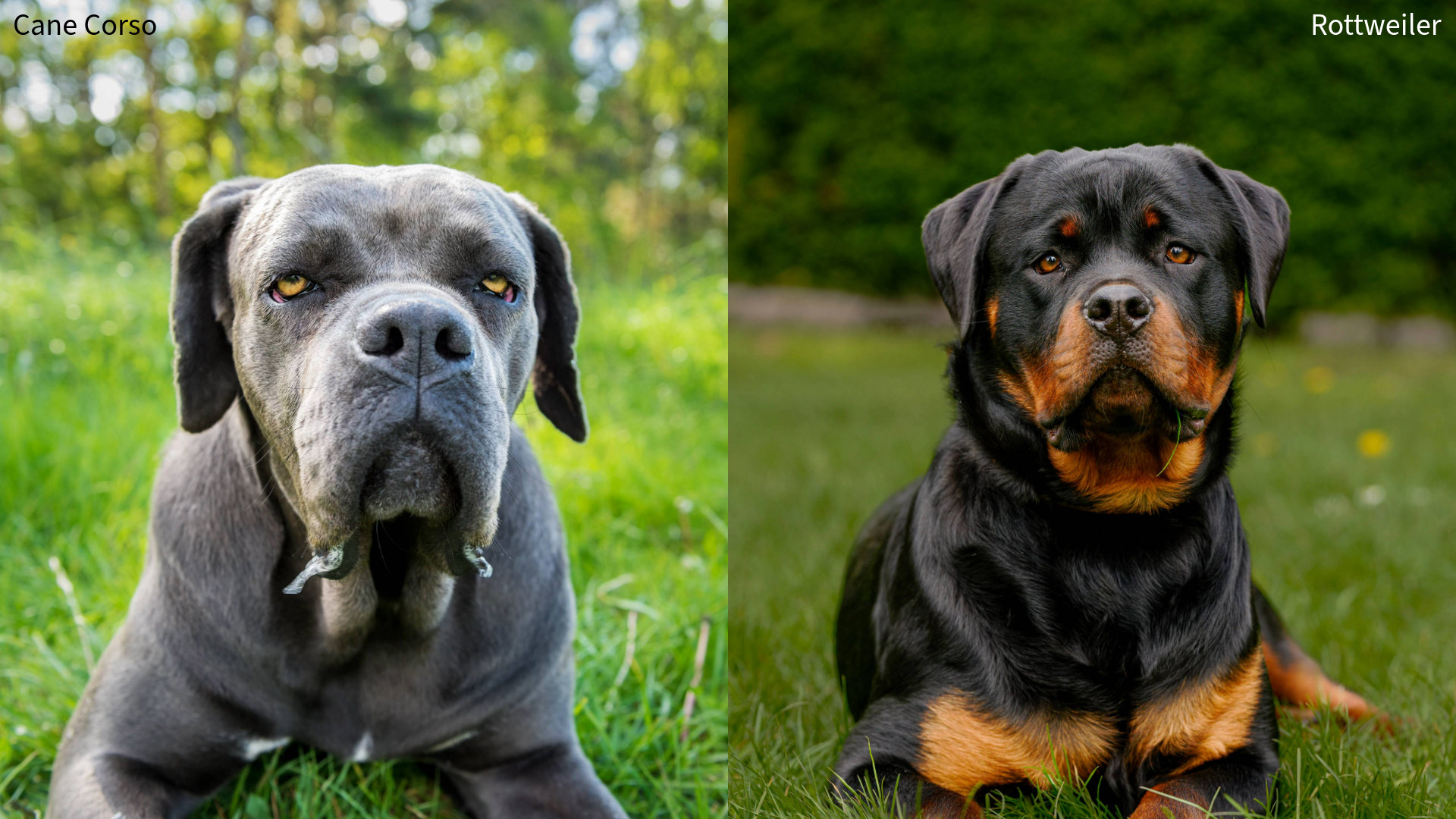
When it comes to appearance, the cane corso and Rottweiler both have a muscular build, with broad chests, strong legs, and short coats. While the Rottweiler's muzzle is slightly rounder in shape, the cane corso has a squarer muzzle that’s wider and longer in proportion.
Cane corsos can come in a range of colors, including black, fawn, gray, black brindle, gray brindle, red, and chestnut brindle. Rottweilers have a black coat with tan, rust, or mahogany markings – and in rare cases, may be albino or all red.
Both dogs have medium-sized ears, but the cane corso’s are naturally floppy, while the Rottweiler's are triangular and sit more forward-facing.
Get the best advice, tips and top tech for your beloved Pets
Intelligence and trainability: Cane Corso vs Rottweiler
If you're planning to train a dog on your own, you're probably wondering which breed is more intelligent and easier to train. According to Dr MacMillan, both are very clever, but the Rottweiler is slightly more switched on of the two. While these dogs are bright, they can also be quite stubborn at times, so you'll need plenty of patience during training sessions.
Dr MacMillan adds: "Both the cane corso and the Rottweiler are large, muscular dogs that need positive and consistent training to ensure they are kept under good control.
"You don’t want either of these dogs pulling on the leash if you value your shoulder joints! These dogs can also be prone to aggression if they haven’t had the right early socialization."
Exercise needs: Cane Corso vs Rottweiler
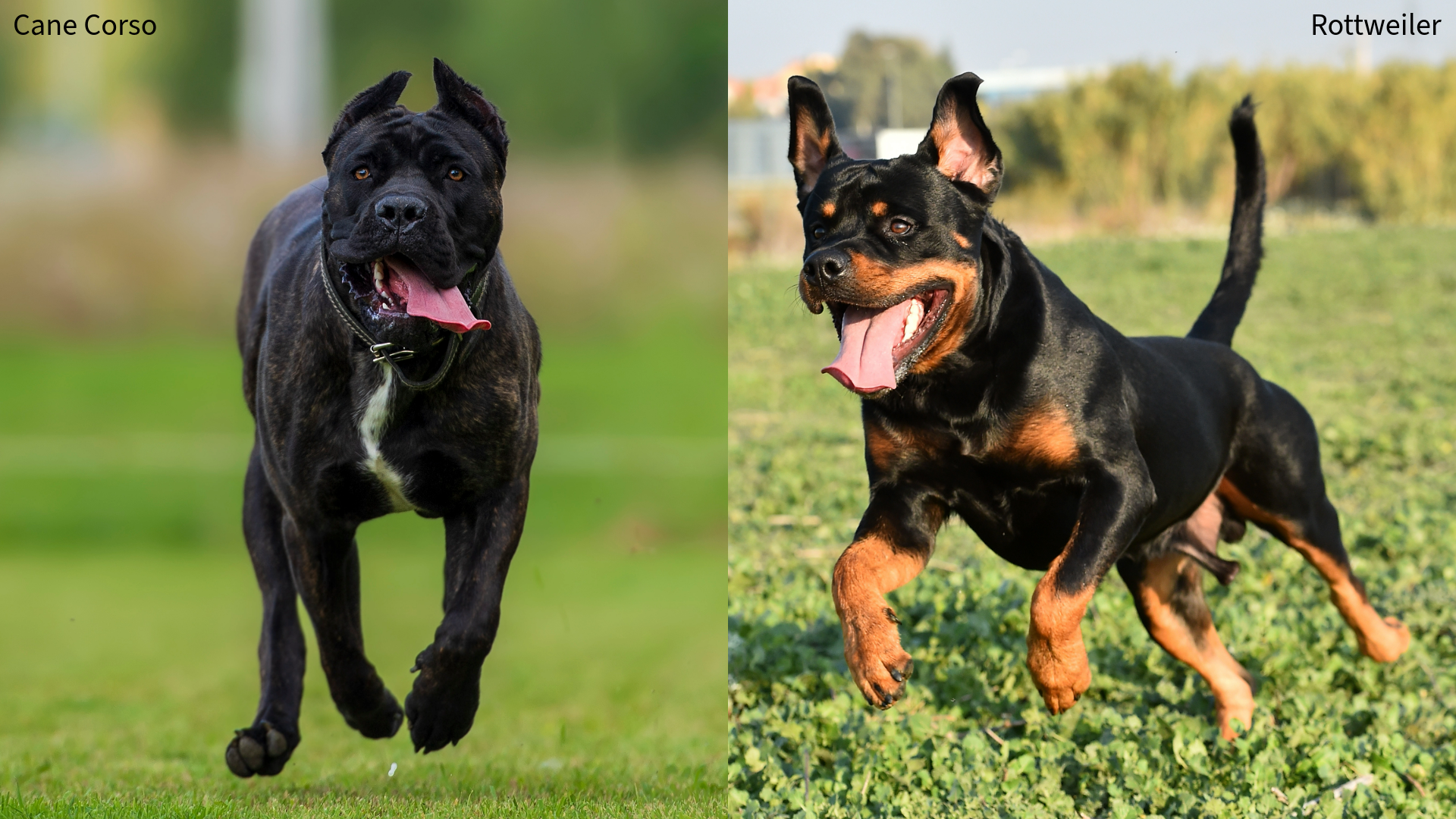
As large dogs with high levels of intelligence, both breeds need a good degree of exercise. It’s also beneficial if you have a decent-sized garden or yard for either to run around in (dogs like this are not particularly recommended for apartment living).
Dr MacMillan says: "Depending on their age and health status, cane corsos need 60–90 minutes of physical activity each day. Rottweilers usually need 60–120 minutes of exercise. This means the Rottweiler may be the better choice for a more active household."
Grooming: Cane Corso vs Rottweiler
The grooming needs for both of these breeds are relatively light, since they are both short-haired dogs who won’t need haircuts. That makes them both good for those who want a low-maintenance canine.
However, as with any pet, you’ll need to make sure to brush the dog’s teeth, trim their nails, and perhaps give their coat a going over now and then with the best dog brushes.
One of the big questions you might have is, do cane corsos shed? And what about Rottweilers? In general, Rottweilers are known to shed a little more, but as their coats aren’t too dense, for most, this won’t be a huge problem unless you’re particularly fastidious.
Dr MacMillan says, "Both breeds have short, easy-to-care-for coats. Brushing once or twice a week should be enough to keep their coats looking at their best. Daily teeth brushing is recommended for all dog breeds to keep dental disease at bay."
Health considerations: Cane Corso vs Rottweiler
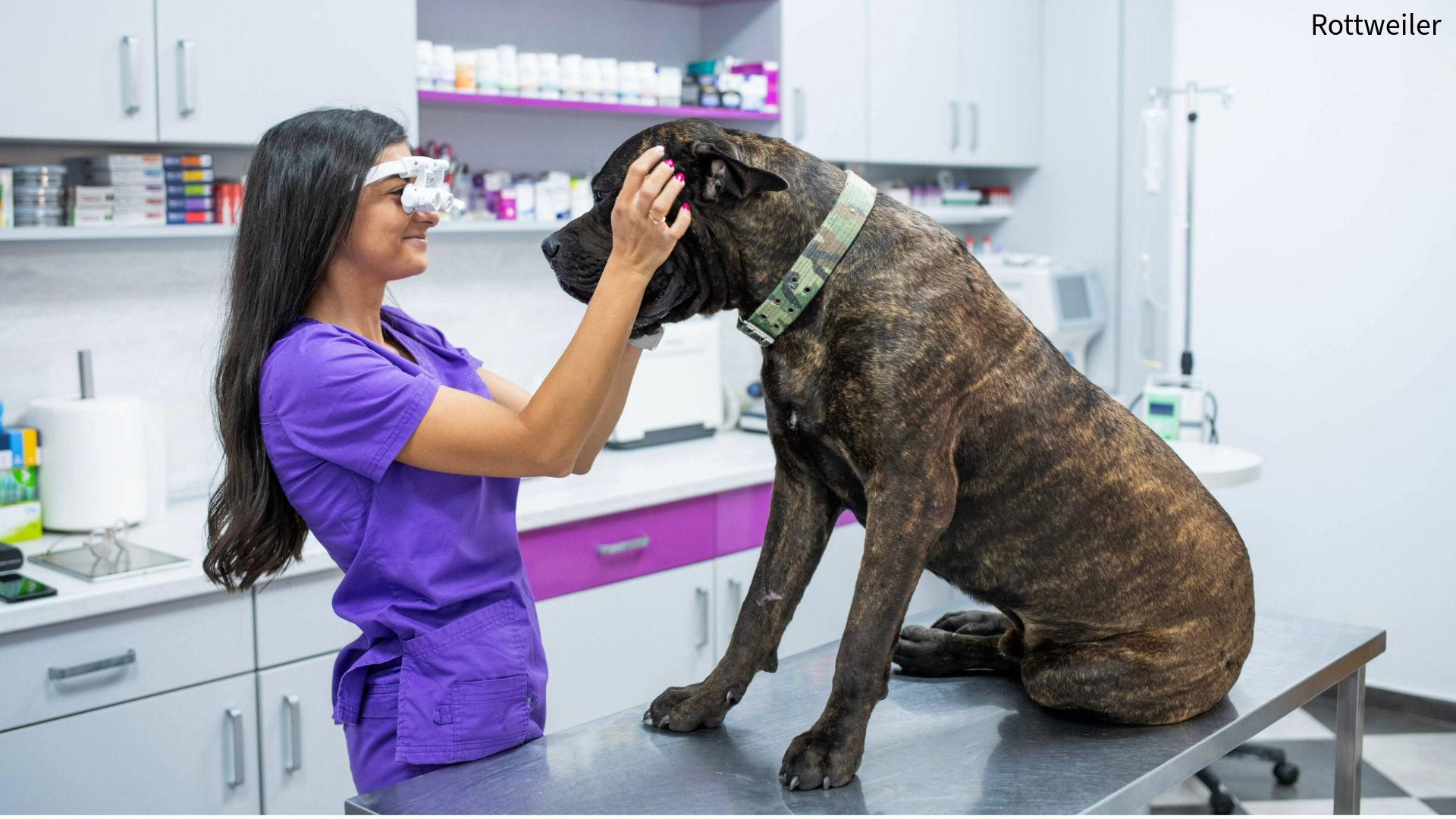
Unfortunately, both of these breeds are prone to the following health consideration, according to Dr. MacMillan:
- Elbow and hip dysplasia: Typically found in large breeds, elbow and hip dysplasia in dogs occur when the joints don’t develop properly, leading to reduced mobility and pain, which can contribute to obesity.
- Joint problems: "[Their] joint abnormalities can lead to pain, mobility issues, and early-onset arthritis."
- Osteoarthritis: This progressive disease causes the breakdown of joint cartilage, which can lead to joint pain, inflammation, and mobility problems.
- Eye problems: "Conformational eye issues like entropion, rolling inwards of the eyelids, can affect both breeds. Owners should be vigilant for excessive eye watering or discomfort, as affected dogs can develop painful eye ulcers."
- Gastric dilatation volvulus: "Both dogs are at increased risk of gastric dilatation volvulus because they are large and deep-chested dogs. In this condition, the stomach bloats and twists on itself, which is a medical emergency."
- Skin problems: "I regularly see cane corsos for skin issues, including allergies and demodectic mange, but Rottweilers can also be prone to issues, including ‘hotspots’ – also known as acute moist dermatitis."
She adds, "Rottweilers are more prone to various types of cancer than cane corsos. However, both dogs are at risk of osteosarcoma, a type of tumor that develops in the bone."
Owner suitability: Cane Corso vs Rottweiler
Before you commit to bringing one of these gorgeous breeds home with you, it's important to weigh up whether they're the right fit for your household and lifestyle.
They might be a good match if...
✅ You're committed to regular short training sessions
✅ You're able to provide them with enough physical exercise
✅ You have plenty of time to socialize them
They're not right for you if...
❌ You live in a household with young children
❌ You don't have enough time to exercise and train them
❌ You're not looking for an active breed
❌ You live in an apartment
FAQS
Is a Cane Corso smarter than a Rottweiler?
Both of these breeds come out as intelligent, but the Rottweiler is consistently ranked in the top 10 most intelligent dogs in various surveys. How smart they are is just one of the surprising Rottweiler facts.
As such, the Rottweiler is likely to be easier to train and get its head around tasks more quickly than the cane corso. That said, they can both be stubborn dogs who simply might refuse to do something if they just don’t want to do it.
Both respond well to a good level of training, and indeed, both will need it to make sure that any aggressive tendencies are kept in check. It’s important to socialize these animals as soon as possible with other dogs and with people to make sure that they don’t become dangerous.
Obedience is high for both dogs – which again makes sense when you consider they were originally bred as protector and worker dogs.
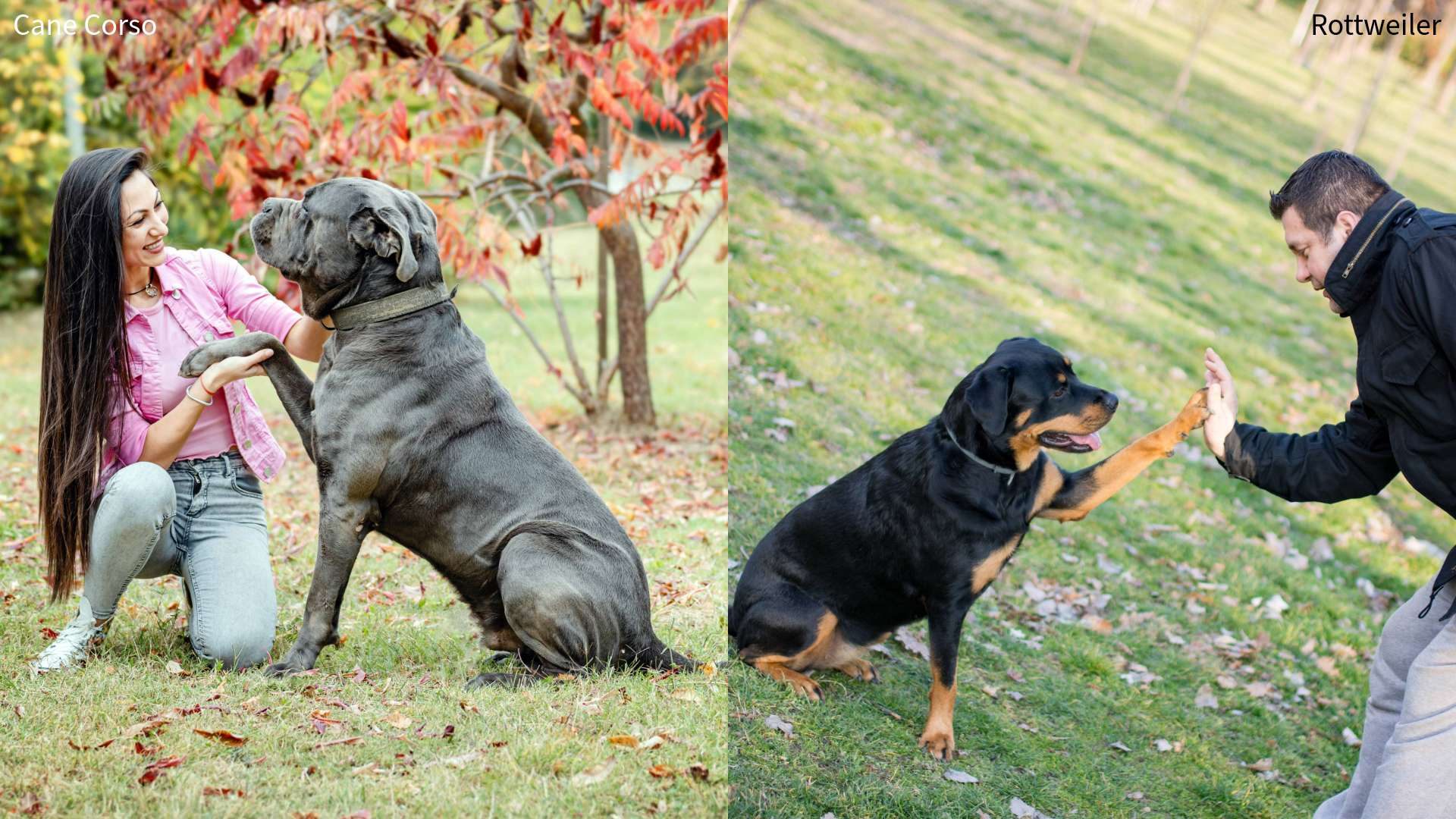
Is a Cane Corso stronger than a Rottweiler?
The cane corso is widely regarded as one of the strongest dog breeds in the world and aside from its strong bite force and slightly larger size, it also has a more muscular build. Since the cane corso is a dominant dog, it’s recommended that you only consider bringing one into your home if you are experienced. It’s important to have the confidence to show a cane corso who is boss.
Does a Cane Corso or Rottweiler have the strongest bite?
As we’d expect from breeds with these origins, the bite force of both the Rottweiler and the cane corso is pretty strong, but there’s one that comes off notably stronger.
The cane corso has a bite force of around 700psi (pounds per square inch), while the Rottweiler is said to be 328psi. You might therefore feel more comfortable owning a Rottweiler, especially if you don’t have lots of experience handling large, strong dogs.
The Complete Guide to the Cane Corso | Amazon
Keen to learn more about the cane corso breed? This book will teach you everything there is to know – from training tips to health care advice.
The Complete Guide to Rottweilers | Amazon
If you're still unsure whether the Rottweiler is right for you, this book is a must-have. It includes guidance on socialization, grooming, supplies, and more.
You might also want to read these cane corso facts or learn about the different types of Mastiff breeds
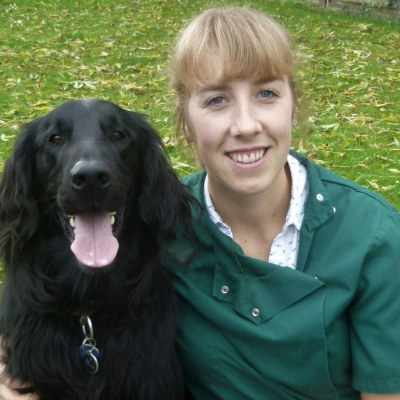
Rebecca is a veterinary surgeon who graduated from the Royal Veterinary College in London in 2009. She enjoys medicine in particular and she is proud to have achieved a BSAVA postgraduate certificate in small animal medicine (with commendation) from Nottingham Trent University in 2021.
Edited by Georgia Guerin and Alexis De Leaver.
This page was last updated in June 2025 by Megan Milstead.
Amy Davies is a freelance writer and photographer with over 15 years experience. She has a degree in journalism from Cardiff University and has written about a huge variety of topics over the years. These days she mostly specialises in technology and pets, writing across a number of different titles including TechRadar, Stuff, Expert Reviews, T3, Digital Camera World, and of course PetsRadar. She lives in Cardiff with her dog, Lola, a rescue miniature dachshund.



